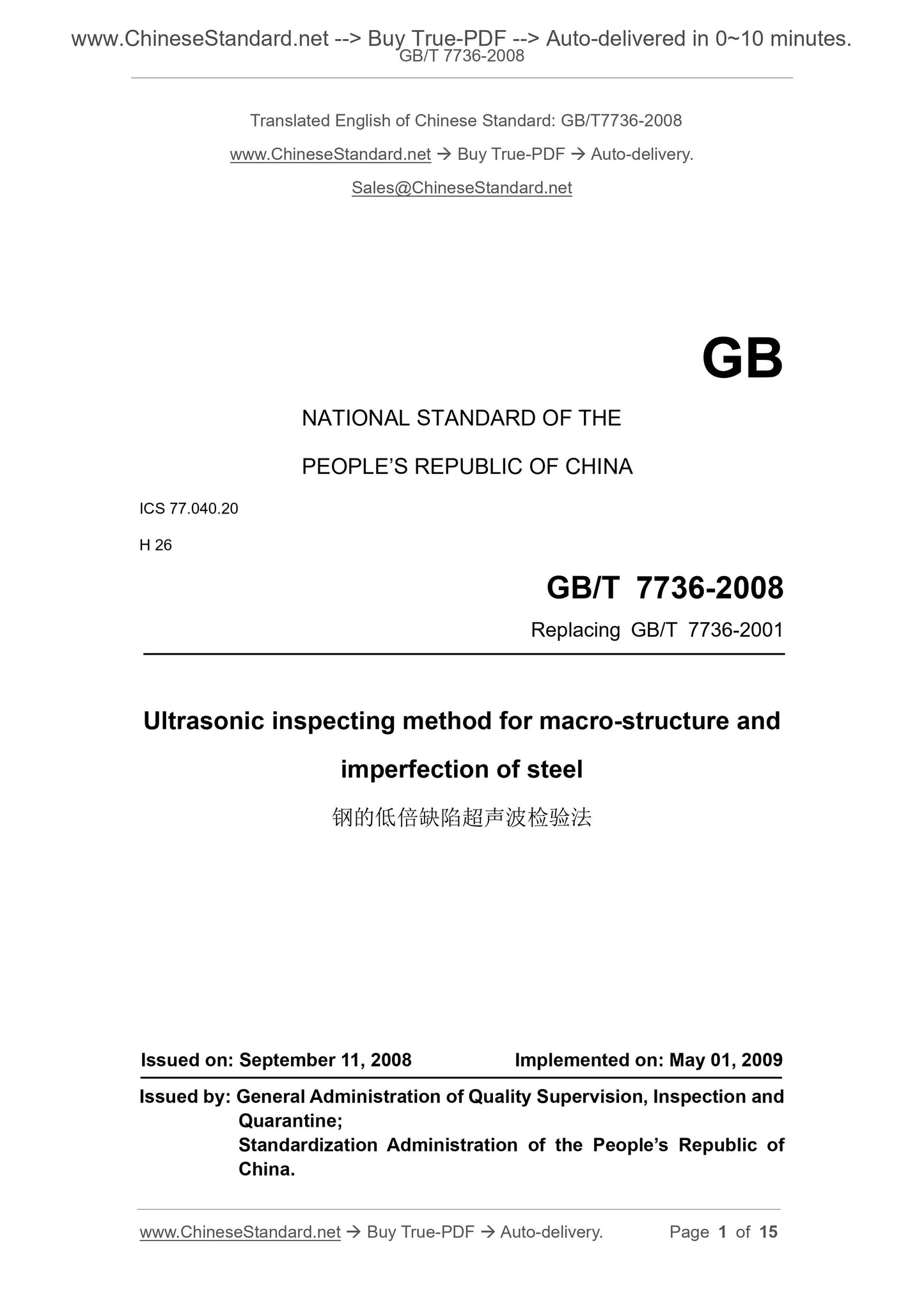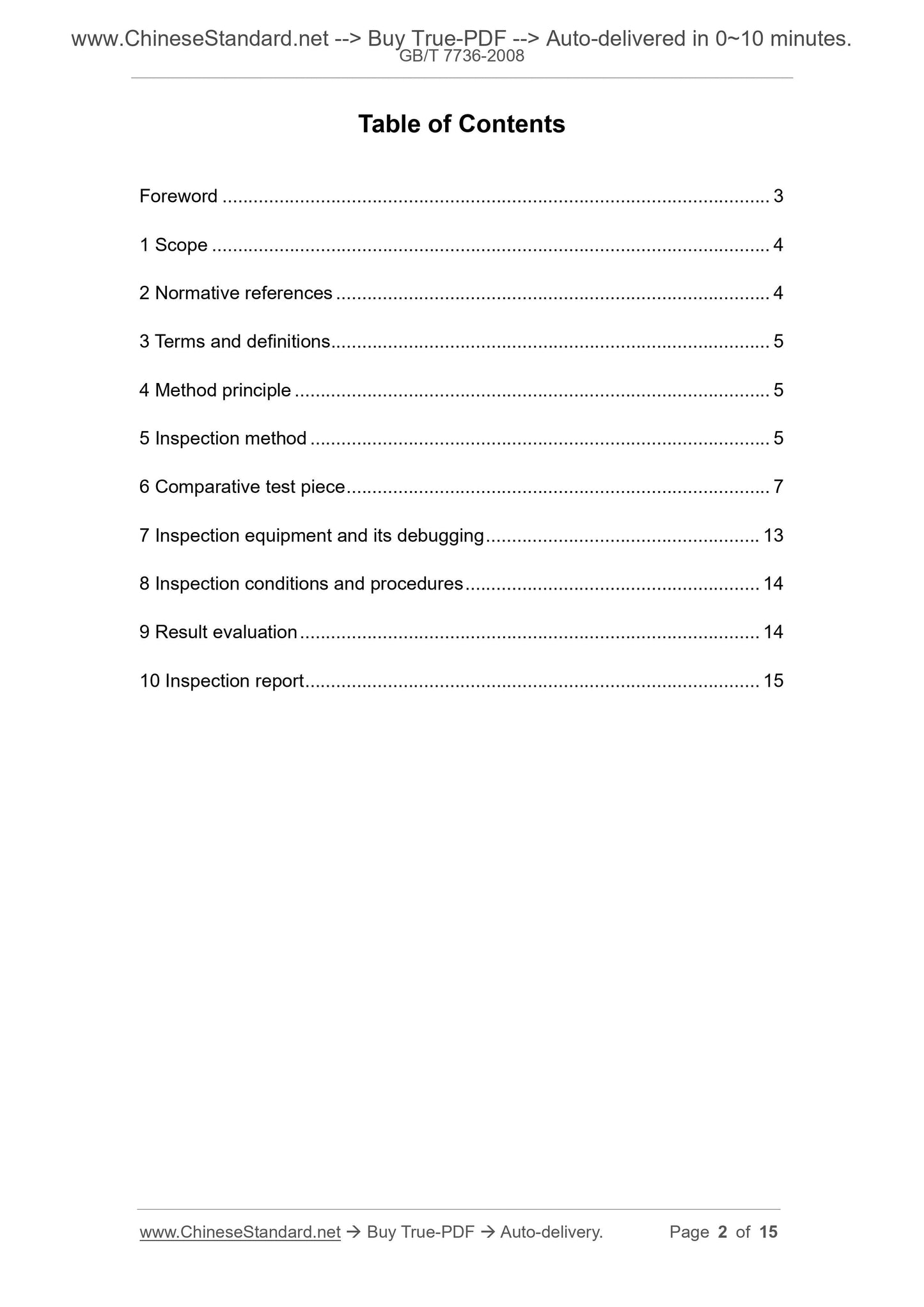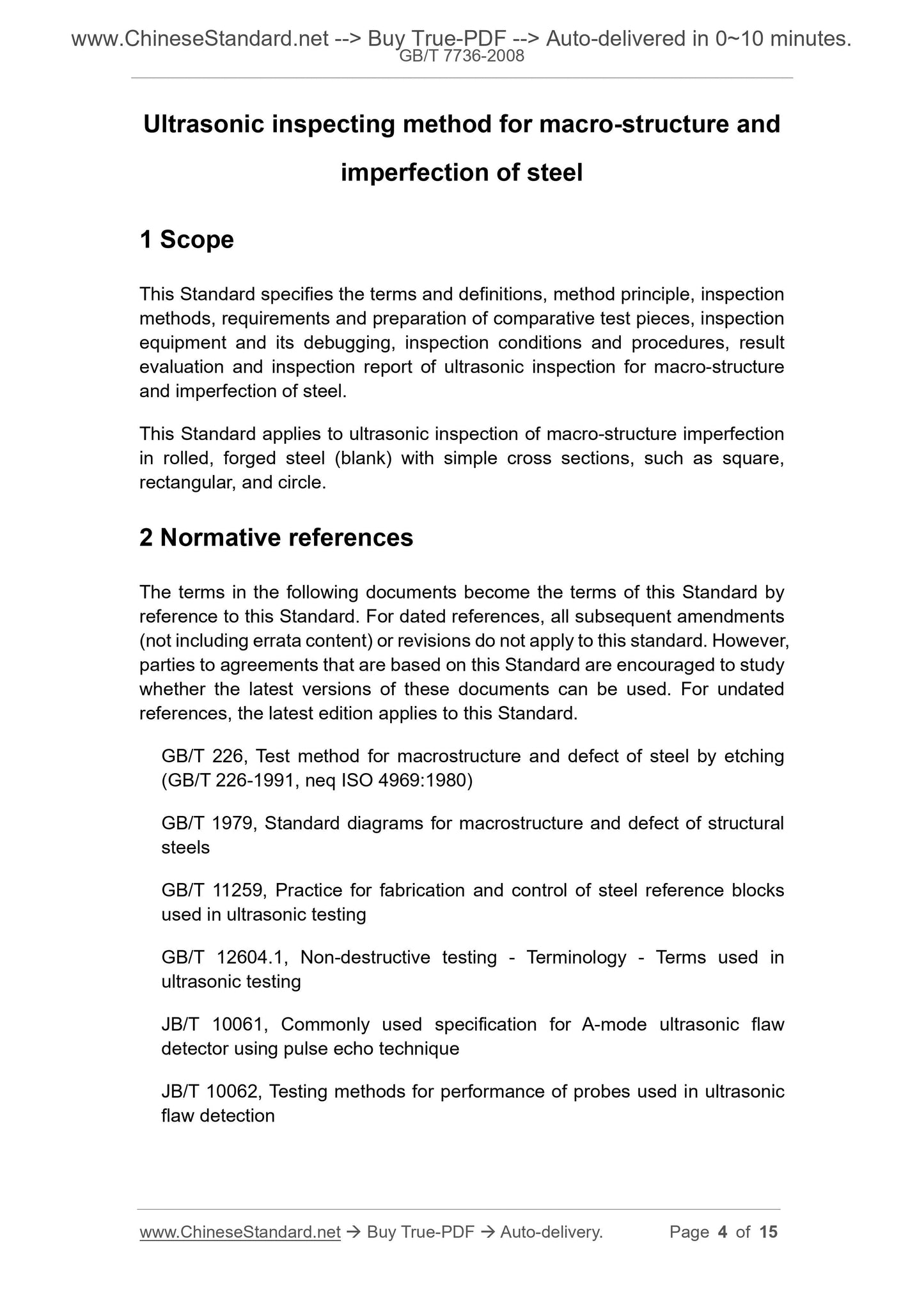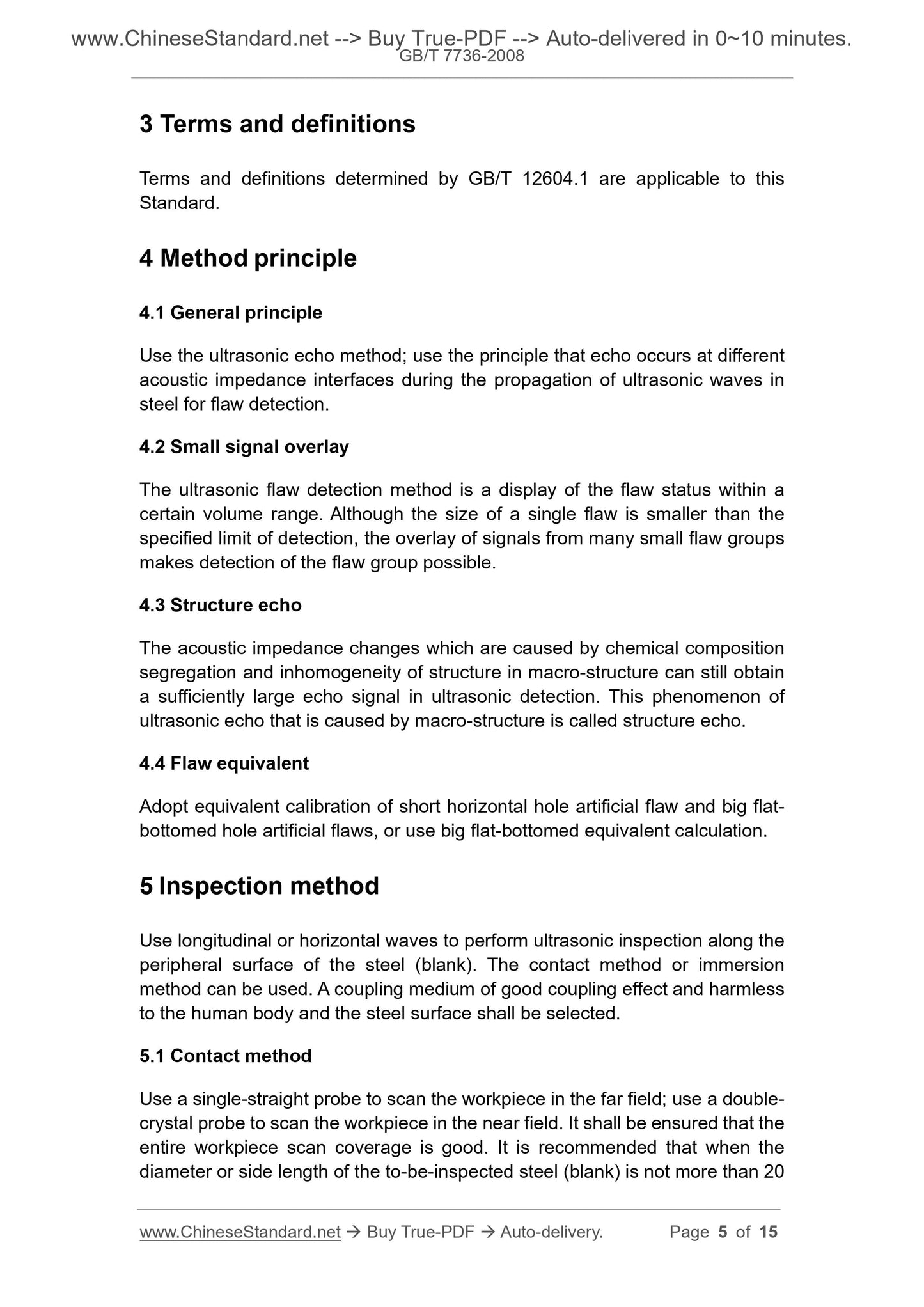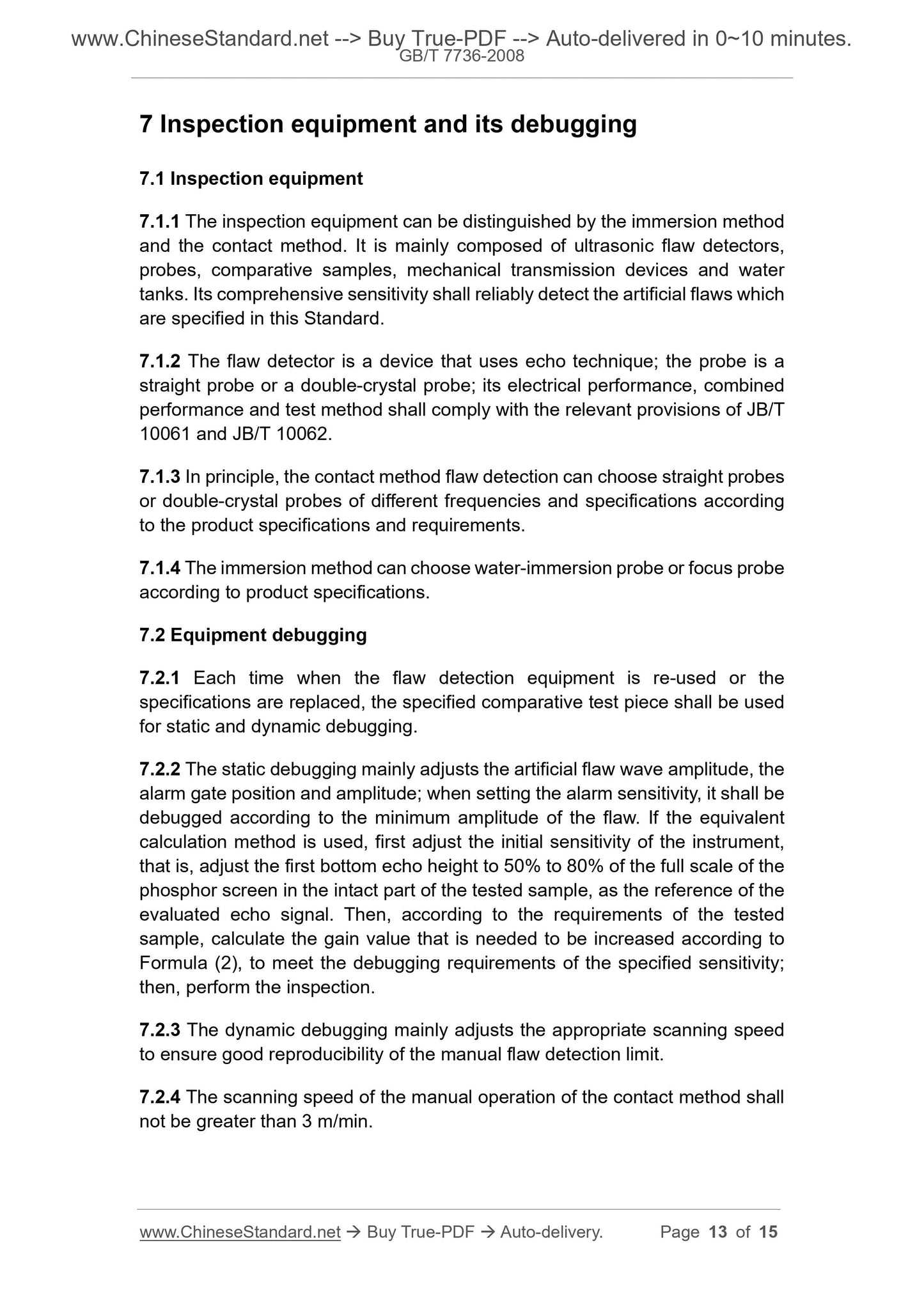1
/
of
5
www.ChineseStandard.us -- Field Test Asia Pte. Ltd.
GB/T 7736-2008 English PDF (GB/T7736-2008)
GB/T 7736-2008 English PDF (GB/T7736-2008)
Regular price
$70.00
Regular price
Sale price
$70.00
Unit price
/
per
Shipping calculated at checkout.
Couldn't load pickup availability
GB/T 7736-2008: Ultrasonic inspecting method for macro-structure and imperfection of steel
Delivery: 9 seconds. Download (and Email) true-PDF + Invoice.Get Quotation: Click GB/T 7736-2008 (Self-service in 1-minute)
Newer / historical versions: GB/T 7736-2008
Preview True-PDF
Scope
This Standard specifies the terms and definitions, method principle, inspectionmethods, requirements and preparation of comparative test pieces, inspection
equipment and its debugging, inspection conditions and procedures, result
evaluation and inspection report of ultrasonic inspection for macro-structure
and imperfection of steel.
This Standard applies to ultrasonic inspection of macro-structure imperfection
in rolled, forged steel (blank) with simple cross sections, such as square,
rectangular, and circle.
Basic Data
| Standard ID | GB/T 7736-2008 (GB/T7736-2008) |
| Description (Translated English) | Ultrasonic inspecting method for macro-structure and imperfection of steel |
| Sector / Industry | National Standard (Recommended) |
| Classification of Chinese Standard | H26 |
| Classification of International Standard | 77.040.20 |
| Word Count Estimation | 11,160 |
| Date of Issue | 2008-09-11 |
| Date of Implementation | 2009-05-01 |
| Older Standard (superseded by this standard) | GB/T 7736-2001 |
| Quoted Standard | GB/T 226; GB/T 1979; GB/T 11259; GB/T 12604.1; JB/T 10061; JB/T 10062 |
| Regulation (derived from) | National Standard Approval Announcement 2008 No.16 (Total No.129) |
| Issuing agency(ies) | General Administration of Quality Supervision, Inspection and Quarantine of the People's Republic of China, Standardization Administration of the People's Republic of China |
| Summary | This standard specifies the low times stronger than steel ultrasonic flaw inspection of terms and definitions, principle of the method, test methods, requirements and preparation for a test block, inspection equipment and commissioning, inspection conditions and procedures, outcome assessment, inspection reports. This standard applies to square, rolling simple circular cross-section, etc., , rectangular forged steel products (billets) low magnification ultrasonic testing defect, also applies to other steel parts, blank defect inspection. |
Share
